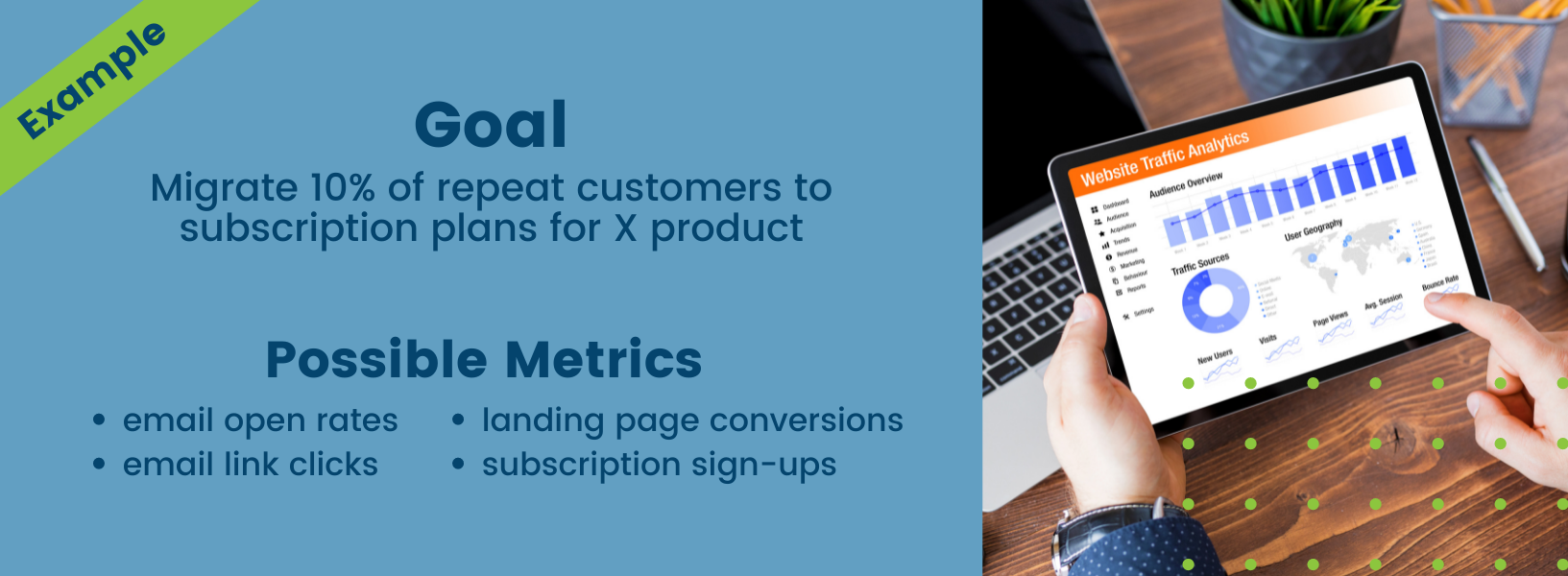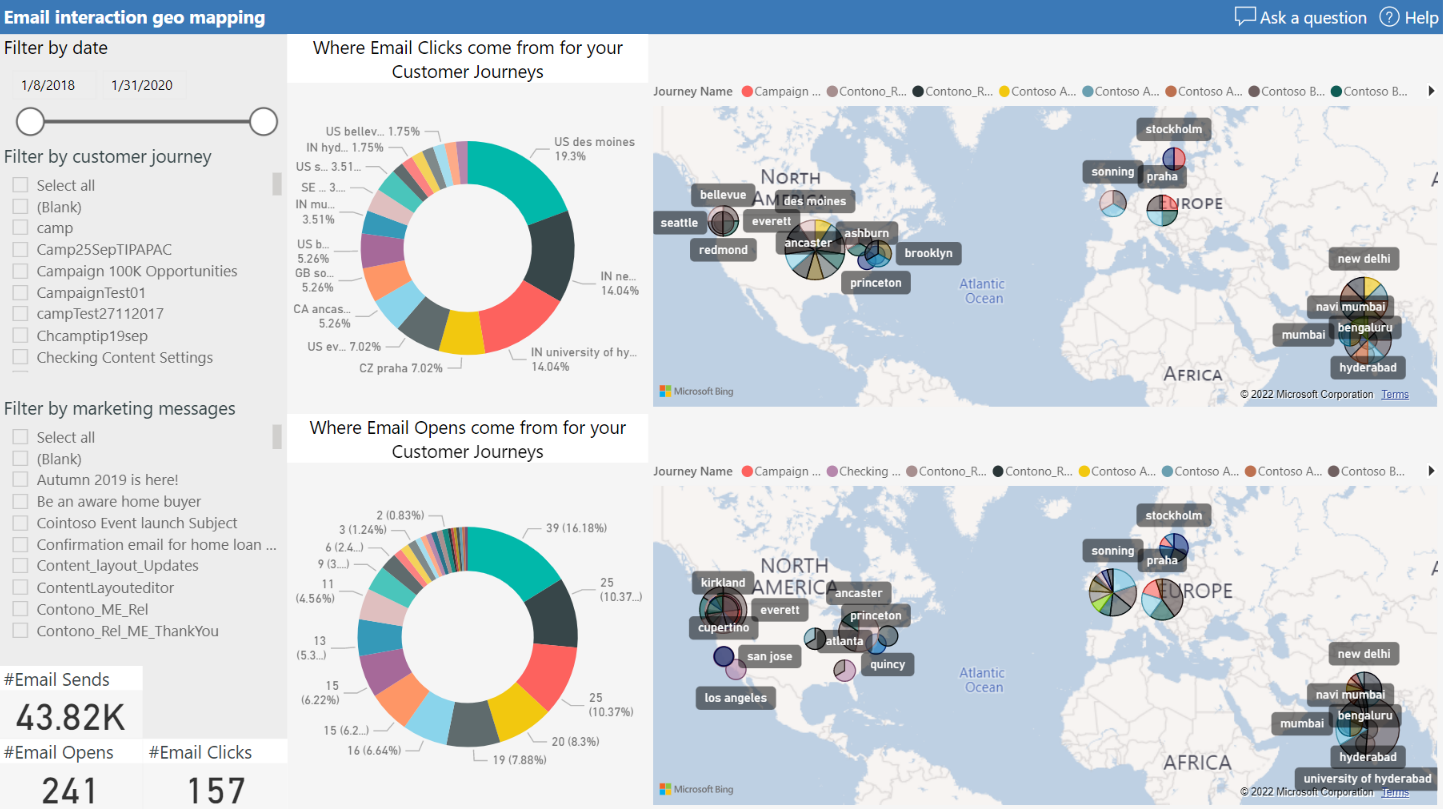Habits of highly effective marketers: Measure your success
Ever heard the proverb “out of sight, out of mind”? Well, the things we measure are in our sight, on our minds, and therefore more likely to be the target of change. We live in an increasingly data-driven world, where gathering data, making sense of it, and garnering actionable insight from it is as easy as it has ever been. The data begs to be used.
Yes. This next blog in the series “Habits of highly effective marketers” will dive into another component of the marketing strategy. As we mentioned in the first blog in this series—all about documenting your strategies and processes—to improve the chance of reaching your goals by 33%, follow these steps:
write goals down
rate goals on importance, difficulty, and feasibility
establish (and also write down) actions you will take to get to the goal
share all this with someone
regularly report on progress
Progress comes about through measuring what you want to improve—so that’s the next habit we will explore.
Establish goals
No matter the business, goals must be set and steps taken to achieve them. When setting goals, make them as smart as possible—and by smart, we mean S.M.A.R.T., the popular mnemonic acronym.
Specific – Make goals precise as opposed to broad. “Increase leads” or “Sell more” are less effective goals than “Increase qualified leads by X%” or “Migrate 10% of repeat customers to subscription plans.”
Measurable – Progress needs to be evaluated through some means. What metrics will show movement toward each goal? That should be tracked and assessed to show evidence of progress (or lack thereof) toward goals.
Attainable – Ensure your goals can be reasonably met within your set timeframe. You may want to shoot for the stars, but that means getting to the moon first!
Relevant – What ‘relevant goals’ are is dependent on your business and values, plus what you want to accomplish in the long-term.
Time-based – You want your goals to have a defined date by which they should be reached. Balance the end date by making it ambitious yet realistic for maximum motivation. It may help to take the approach that many teachers take when planning their curriculum—backwards design—by looking forward to the intended result or outcomes, then estimating how long all foreseeable steps or tasks will take to reach that result. This might help you set more realistic, less arbitrary timeframes.
It's also recommended that you don’t set an overabundance of goals at one time, which might overwhelm your team and lead to some goals failing because there is just not the capacity to make progress on them.
Measure the right metrics/KPIs
Our world is an ocean of data, and discerning what metrics to measure is essential. KPIs, or key performance indicators, are trackable and quantifiable measures of performance changes over a span of time. What metrics will serve as evidence or proof of each goal’s progress? If a goal of yours revolves around social media or digital marketing, here are a few possible metrics:
Social media likes, shares, follows
Email opens
Link clicks
Landing page visits
Website page visits, time spent on page
Bounce rate
Web form submissions
Email subscription sign-ups
Lead to opportunity conversions
Qualified leads
Engagement rate
Reporting
It is easy to get lost in the sea of data and not know what to do with it, so ensuring your data is organized and presentable is a necessary element of measuring your success.
Happily, many marketing processes can be completed and tracked right in CRM applications such as Microsoft Dynamics 365 Marketing. Schedule posts on a variety of platforms across numerous accounts and track social media metrics like likes, link clicks, and more. Build engaging, beautifully designed, and professional emails in the easy drag-and-drop email designer with features like custom branding and AI-based content ideas—then send emails via customer journeys to select audiences or segments. Track email open rates, open times, and link clicks via an interactive and customizable dashboard right in the app. Organize contacts, leads, and audience segments with ease, and create your own lead scoring models based on your business priorities. (And that’s just a few of the many functionalities available in Dynamics 365 Marketing!)
Plus, Power BI can serve your more robust reporting and data visualization needs. Dynamics 365 Marketing data, and data from almost any other location—such as social media platforms or website domains—can be imported, cleaned, sorted, and organized in this reporting tool. Use template visualization models or design your own custom visualizations, build interactive dashboards of your KPIs, share with your team, and gain actionable insight from all the data you are tracking to indicate your goal progress.
A Power BI marketing analytics dashboard for email interaction geo-mapping. Courtesy of Microsoft.
A Power BI marketing analytics dashboard for email interaction timelines. Courtesy of Microsoft.
Adjust as necessary
We may all be guilty of knowing in theory what is likely to improve something…and we don’t do it. Why don’t we make that change? It could be laziness, as one may think, “I know what I should do, I just have such a hard time doing it!” But you may be giving laziness too much credit. It’s incredibly difficult to break old habits and routines, and there’s a lot that goes into making a change, especially in the workplace.
If, for instance, you decide to change your social media approach because you aren’t meeting your established goals, what goes into that change? You need to develop a new plan, for starters. Then you need approval from management. Then you need to make the changes—and this has the potential to be a big task and can include anything from changing daily or weekly practices, to experimenting or researching to find the right approach, to altering reports or dashboards based on new metrics to track, and beyond.
And yet, it has to happen. More often than we like, reports and our analysis reveal that we need to make changes (after all, we track metrics to find out what we can improve). Being agile, open to pivot strategies and follow the clues our metrics reveal, is a necessary skill in any industry today. So the message here is that, tough as it is, marketers must embrace the challenge of change—they must follow the lessons learned from the metrics to improve their performance and, hopefully, the business as a whole.
Get started
Great marketers have great tools to help them get their job done and track progress toward their goals. Check out our first and second blogs in this series, then connect with our CRM consultants to find out if Dynamics 365 Marketing is right for your business. We can show you a personalized demo based on your business needs, answer all your questions, and help you design the best CRM for your strategies and processes.






